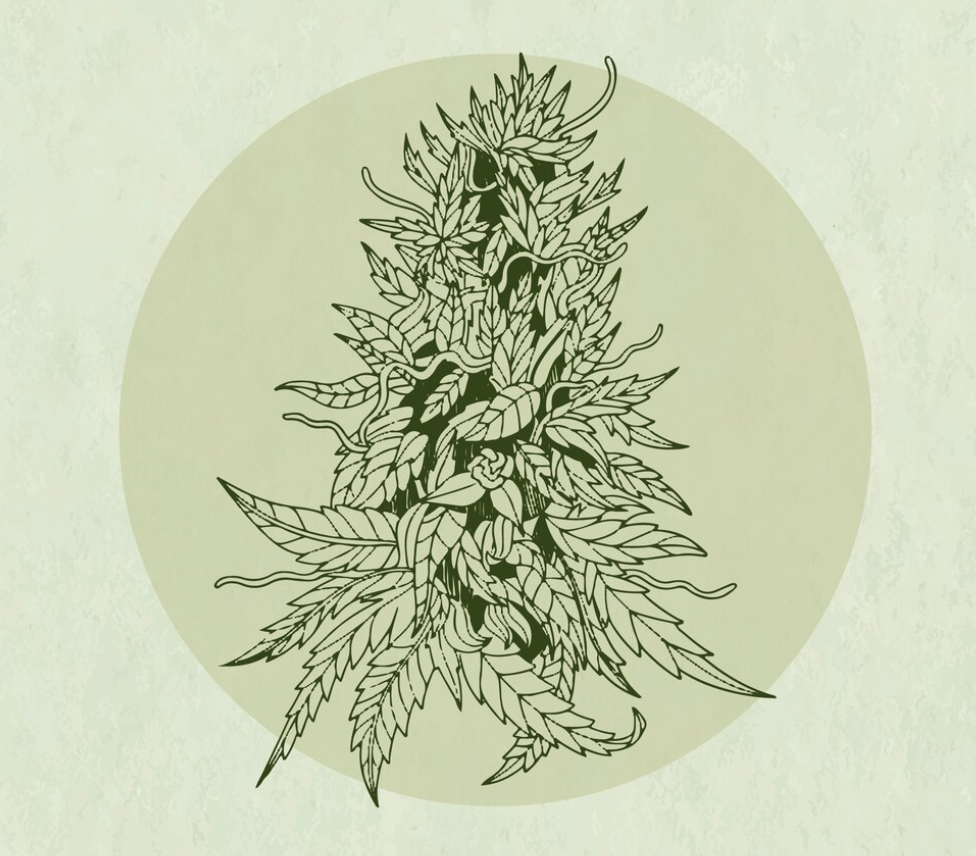Why it gets us high in the first place is still pretty perplexing. Is it just an accidental quirk of biochemistry, or some kind of adaptive evolutionary strategy on the part of the plant itself? And if so, what could that strategy originally have been? Hm, surely the plant wouldn’t want to be burned, inhaled, or baked into delicious brownies by a species of bipedal ape, right? Well, to dive deeper into that question, we first need to look at exactly how cannabis gets us high in the first place. The primary molecule cannabis produces that’s responsible for its psychoactive effects is called tetrahydrocannabinol, or THC and it’s just one of many chemicals that cannabis produces. This has led to cannabis being described as ‘the plant of a thousand and one molecules’. According to research, some of them have antimicrobial and antifungal qualities that help protect the plant from disease. Others seem to act as a natural sunscreen, protecting the plant from exposure to dangerous levels of ultraviolet radiation at high altitudes, which makes a lot of sense, since its original Oligocene habitat was on the Tibetan Plateau, where UV exposure is particularly high. On top of that, there is evidence that such substances assist in repelling some insect pests and grazing animals due to their unpleasant taste and disorienting effects. However, we still don’t completely understand the full ecological context that drove cannabis to become such a prolific chemist. What we can say though, is that some of those molecules, including THC, happen to be the right shape to bind to specific receptors in our bodies (lock and key model), therefore being involved in what’s called the endocannabinoid system. This is an ancient cell-signaling network that’s found in almost all animals, from us primates to sea urchins, possibly dating back as far as 600 million years. The system uses a class of molecules produced by the body called endocannabinoids. Many of them are comparable to those found in cannabis, and they regulate a wide range of vital biological functions. These include appetite, sleep, mood, learning and memory, metabolism, and various aspects of overall growth and development. This means that animals have been producing and using cannabinoid molecules for hundreds of millions of years before plants like cannabis independently evolved their own versions. And these versions, like THC, mimic our own internally produced cannabinoids. They bind to the same receptors and regulate many of the previously described processes, resulting in the typical ‘high’ that cannabis users experience. Plants originally created these chemicals for defense purposes, but humans found their effects intriguing. And for thousands of years, through a process of deliberate and sometimes clandestine selection, we’ve fine-tuned those effects, making what was supposed to be a deterrent even more appealing. As a result of its capacity to hack an old cellular communication system of animals, cannabis became a favorite of many early cultures while remaining prohibited in many modern ones. Whatever your thoughts on its current use, cannabis is a plant that people have been cultivating for longer than nearly any other.

